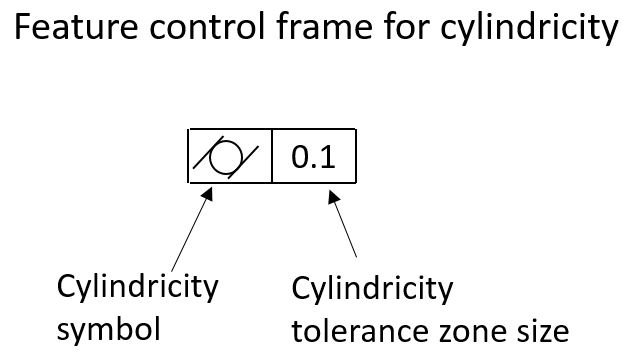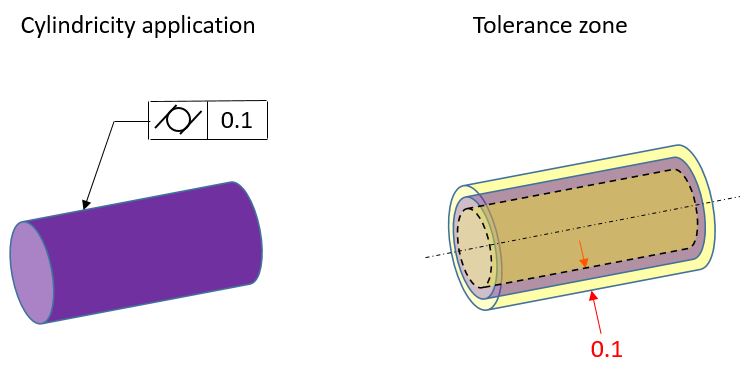Cylindricity
We discussed Harley's toy before when we wondered how straight it is. Now we take that a step farther and discuss how cylindrical it is.
The cylindricity specification is as shown below.
Cylindricity is always applied to a surface. It never has a datum reference. It never has any modifiers in the feature control frame except the Free State Modifier if applicable.
In our case below, the entire surface must fall between two concentric cylinders that are 0.1 apart. The 0.1 is a radial distance.
It says nothing about the size of the cylinders. It's just any two concentric cylinders that are radially 0.1 apart.
Cylindricity applies over the entire part at the same time.
In our case below, the entire surface must fall between two concentric cylinders that are 0.1 apart. The 0.1 is a radial distance.
It says nothing about the size of the cylinders. It's just any two concentric cylinders that are radially 0.1 apart.
Cylindricity applies over the entire part at the same time.
Cylindricity must always apply to a cylinder - nothing else.
As with all form tolerances, rule #1 applies a cylindricity tolerance whose value is equal to the size tolerance. Therefore any cylindricity tolerance that is applied must have a value that is smaller than the size tolerance.
As with all form tolerances, rule #1 applies a cylindricity tolerance whose value is equal to the size tolerance. Therefore any cylindricity tolerance that is applied must have a value that is smaller than the size tolerance.



